The governments decision to scrap the handloom and handicraft boards is seeing betrayed weavers and co-operatives say they need representation before marketing
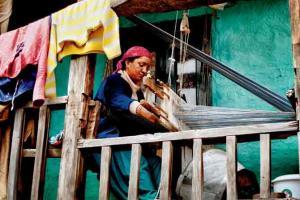
A woman works on a loom in the balcony of her home in the village of Old Manali in Himachal Pradesh. The abolishing of the All India Handloom and Handicraft Boards have left many weavers disillusioned
The Ministry of Textile's Twitter handle has seen a flurry of activity, all through August. #Vocal4Handmade, a hashtag championed by Smriti Irani, Union Minister for Textiles and Women and Child Development, to spread awareness about the handicraft tradition, has also become a cri de coeur to support the average Indian weaver. Every day, a string of posts shared by the ministry, lists names of award-winning weavers, their body of work, credentials and direct contact numbers for interested buyers. This is supplemented with photographs of their designs. Mini videos made by organisations, including the Fashion Design Council of India—retweeted by the ministry—showcase everything from the Lepcha weave of Sikkim to the Telia Rumal from Telangana.
The official handle, for all good reasons, has now transformed into an encyclopaedia on handloom, of sorts. The more you scroll, the more there is to learn and find.
What it has also done is given a voice and face to thousands of artisans and weavers, otherwise considered only as good as their craft or weave. In a recent interview to Indic Academy, Irani said that people had responded positively to the social media buzz. The cumulative impressions of the handmade and handloom hashtags, she claimed, had reached 20 billion on a single day, increasing sales on ecommerce sites for these products by five times.
But, there is disenchantment too. And much less publicised.
On August 7, a day observed as the National Handlooms Day, weavers staged a demonstration at the Devangapuri handloom cluster, near Chirala in Andhra Pradesh, to protest the scrapping of the All India Handlooms and Handicrafts Boards by the Centre. The decision, taken on July 27 and August 5 respectively, was said to be in consonance with the Government of India's vision of "minimum government and maximum governance" and a "leaner government machinery".

Macherla Mohan Rao, president, National Federation of Handlooms and Handicrafts (NFHH)
The Centre's argument was that abolishing the moribund boards, would help "break the nexus" and ensure that the benefit of government programmes reach the poorest. But Macherla Mohan Rao, president of the National Federation of Handlooms and Handicrafts (NFHH), who led the protest, challenges the view. "Both sectors are in deep crisis. Welfare schemes are reaching only 10 per cent of the weaver community. With artisans earnings below R5,000 per month, many are now searching for alternative employment. Lakhs of artisans have already migrated to other villages or the nearest town to search for work," he says, over email.
The COVID-affected economy, has only hastened the rot in this traditional industry, which is a source of livelihood for around 32 million people, and is the second largest employment generating sector in the country, after agriculture.
"The abolition of the boards are not sudden moves, but intensification of the ministry's policies [over the last six years]. The budget allocation for handloom sector has reduced from R721.55 crore (17.64 per cent) to R485 crore (13.8 per cent) between 2015-16 and 2020-21. During the same period, budget allocation for handicrafts has increased from R315.24 crore to (7.37 per cent) to R388.21 (11.05 per cent)," says Rao.
He feels that if there was any time, when the industry needed a platform that represented them and their issues most, it is now. "I feel like the government is hanging artisans, not with a rope, but with its policy decisions."

Jyotindra Jain, former director, National Crafts Museum
Until the creation of a separate Ministry for Textiles in November 15, 1985, the handicrafts and handloom components rested under the Ministries of Industries and Commerce, says Jyotindra Jain, former director of the National Crafts Museum and retired professor of arts and aesthetics at the Jawaharlal Nehru University.
"The Second Five-Year Plan [1956-1961] had conceived the programmes of development of handicrafts as a mammoth industrial and marketing exercise, largely based on the pre-existing British colonial model. Accordingly, in addition to setting up of regional design centres, art schools were to have separate design development centres [apropos, all the British colonial art schools in India were established with the primary objective of improving Indian artisanry] and special technical institutes for research in handicraft techniques. The Plan suggested setting up emporia, crafts museums and airport shops. Besides tourism, handicrafts were the sole means of earning foreign exchange. There was also a question of providing livelihood to millions of skilled artisans," says the veteran art and cultural historian.
India became the first post-colonial country to incorporate the 'handicraft and handloom industries' into its economic agenda, says Radhi Parekh, founder, ARTISANS' gallery in Kala Ghoda. "Beyond nationalism, the ideologies that shaped the craft and design movement in India, were inspired by larger concerns for social justice and human well-being," she adds.
The All India Handloom Board (AIHB), established in 1952, by cultural activist Pupul Jayakar, and another one exclusively dedicated to handicrafts was set up to create a specialised forum, which could bring together all the stakeholders—crafts persons and weavers, designers, craft developers, marketing agencies as well as exporters—to advise the government on a highly specialised and sensitive area.
Laila Tyabji, chairperson of Dastkar, a non-profit, that works to support traditional Indian craftspeople, explains how "the Cottage Industries Emporia, the Handloom and Handicrafts Export Corporation, SONA shops abroad, the State Handicrafts and Handloom Corporations, the [National] Crafts Museum, the Design Centres and Weavers Service Centres (WSC), the Vishwakarma and ADITI exhibitions, the National Master Craftsperson Awards, were all institutions and initiatives that emerged from those early AIHB discussions". "We might not have had much of a handicraft heritage without them," Tyabji believes.
Yet, by the turn of the century, bureaucracy started taking a toll on these once celebrated institutions. A former member of the board, anonymously shared how over the last few years, the boards had been reduced to paying mere lip service. "Craftsmen would be invited to participate in the meetings, and asked to voice their issues. Invariably, they'd talk about how poor they were. And while it was true, because of the format in which the boards functioned, nothing constructive ever emerged," the former member said. "The boards were just lying there, doing nothing. I think we allowed the institutions to become defunct. And while it is easy to blame the government, what also added to their decline is the bureaucratic neglect. Of course, nobody is doing this intentionally. What is lacking is the understanding of what can be done [to keep these institutions alive] and who can do it."
If the meetings happened, they were few and far between. Only six in the last 15 years, says Mohan Rao. "It is the fault of the development commissioner (Handlooms). He should have convened a meeting every three months. As far as I know, many of the non-official members requested him to convene the meeting orally and in writing. Who will punish him for not doing so? Disciplinary action should have been taken against the DC (Handlooms)." When contacted, Sanjay Rastogi, DC (Handlooms), in an email response said, "Consultation with different stakeholders, industry, e-commerce portals, eminent designers, handloom entrepreneurs and organisations and state bodies take place at various points of time through structured meetings held by the Ministry of Textiles." He added that "the focus is now on field officers who have done some exemplary job in reaching out to weavers and create links with district, state and the Central administration."
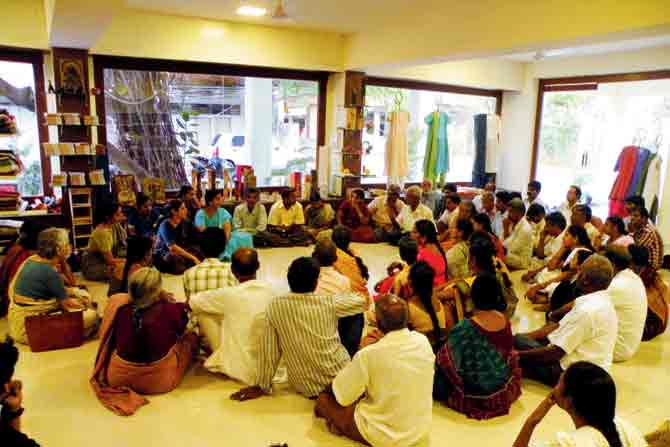
Weavers attend a meeting at a Dastkar Andhra store in Hyderabad. In the absence of an effective board, artisans wonder who will take their voices to the government
Syama Sundari works with the policy and advocacy programme of Dastkar Andhra. Dastkar Andhra provides support and invests in research and training to promote handloom weaving as a viable rural livelihood. It initiated its activities in 1989 as an off shoot of Dastkar Delhi, and registered as an NGO in 1995. Sundari admits that the handloom board had little impact on the policies made for the sector in the recent past. "I can say this with more firmness as I was made a member of the board four years ago. There was only one meeting conducted and people were given such short notice that we could not even attend. Then, there was another meeting held a couple of years ago, for which I had not been sent a notice at all. Post the meeting, Dastkar Andhra received a mail saying the meeting was over. Worse, I was marked present at the meeting," she says.

A weaver couple who works with Dastkar Andhra, a non-profit that offers advocacy support, research and training since 1995. Dastkar Andhra's Syama Sundari says she is worried by the abrupt manner in which the boards were dissolved with no consultation
Despite its obsolescence, Sundari says the board held symbolic significance. "Scrapping of a board with no consultation, and to put it down to lean administration is such a feeble reason; it fools nobody. It's a warning to the artisans and the social organisations that they can expect nothing from the state. More bills and policies harmful to the interests of the sector may be in the offing. It is a clear signal that the state no longer will hold itself responsible for the welfare of the artisans."
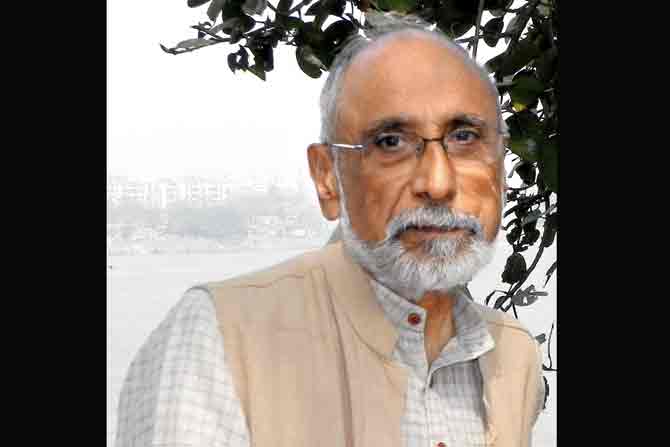
Ashoke Chatterjee, former director, National Institute of Design
What upset many was the abrupt manner in which the boards were dissolved. Ashoke Chatterjee, former director, National Institute of Design, describes the government's decision as "alarming" and "unfathomable". "I have not had any illusions [about the government] over the past 20 years and more, having been part of partnerships, which have had to engage with this crisis [in the handloom industry] for many years. In this latest situation, I am, however, shocked at the lack of concern for or consultation with those most affected," he says, in an email. The NID has been an institutional member of the All India Handicrafts Board.
Chatterjee feels that there was always potential to revive the existing boards. "But to take advantage of that scope would require the ability to engage and to listen."
The weavers of the Devangapuri handloom cluster behind the August protest, had only one demand—reconstitution of the AIHB. Umang Shridhar, founder of KhaDigi, a business-to-business fabric supplier platform that works with nearly 1,000 artisans and weavers in rural India, asks why the weavers have been denied their right to representation. "It's an essential part of democracy. The weavers need a platform to reach out to the government. If the current board wasn't functional, another new, efficient system should have replaced it."

Umang Shridhar, founder of KhaDigi
Rao says the "real stakeholders of the handloom and handicrafts community" were never invited to the boards anyway. "Whenever they [boards] wanted to take decisions on issues, they mostly called NGOs [cluster implementing agencies] and cluster development entrepreneurs and exporters. This was the practice for 20 years, with meagre participation of real stakeholders of the community, who are truly involved and doing dedicated work for more than three decades." He adds that "reconstitution of the boards with eminent and experienced persons to review all relevant matters" is the need of the hour. "They need to visit the [weaver] clusters with the state and central-level authorities to know about the condition of the communities and take our problems to the ministry," he adds.
The pandemic has paralysed many artisans, in much the way it has small businesses, burdening them with debts. "Master weavers and cooperative societies have stopped giving raw materials and wages to weavers in AP and Telangana. Twelve weavers committed suicide in Telangana and two in AP during the lockdown, because they had no work and feared for their future," says Rao.
In some instances, the lockdown also highlighted the unique nature of the sector. A case in point is the weaving community of Guntur district of Andhra Pradesh that Dastkar Andhra works with. "They continued to work from their homes all through lockdown. The loom to operate requires yarn in a suitable form of warp and weft. The dyed yarn is given to weavers by the local co-operatives and preparing the yarn through pre-loom processes [bobbin winding, warping and sizing] were all possible right in the village. We run a dye house and sizing unit in a village in Guntur close to our weavers. We believe the weavers did not suffer from anxiety, as they continued to weave during the worst months of the pandemic," says Sundari.
However, sitting in Hyderabad, with their offices shut, the Dastkar Andhra team had more reasons to worry. They had to sell what was being produced. "I started conversations with the cooperatives, encouraging them to talk to the respective state representatives for help. The state government should have enabled the district co-operative banks to provide working capital loans and also instructed the apex marketing bodies to buy stocks from the co-operative societies. I helped them draft petitions explaining that given the scale of the problem, only a state body could address it. After repeated appeals, the society representatives started talking to the local leaders and others joined," adds Sundari. Unfortunately, by June, the cooperative societies, had run out of money to buy yarn. "Our sales are going at snail's pace due to the pandemic. The only succour came from the state government in Andhra, which started buying stock from the cooperatives and giving them fresh orders for production. In comparison, the response from the Telangana Government has been poor."
Prasanna, theatre director, social activist and founder of Charaka, a women's co-operative society, which runs out of the village of Heggodu in Karnataka, reveals how the pandemic has nearly destroyed this once, self-sustained unit. "Charaka is the largest producer of naturally-dyed handloom fabric in the country. It has a capacity of 30,000 metres per month. We also have our own distribution network called Desi Trust, which has shops across Bengaluru and the state. Through this network, and research and developmental work, we had emerged as a very strong cooperative society in the country. And yet, we are on the verge of collapse. Nearly 90,000 metres of fabric is lying in our godowns. We gave our weavers work to keep them busy all through the lockdown, but the sales have been zero." Once again, there was no help from the government.
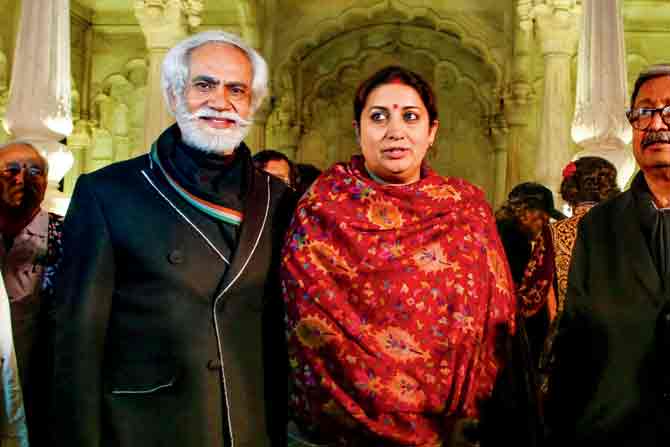
Sunil Sethi, President of the Fashion Design Council of India (FDCI), with Union Textiles Minister Smriti Irani and Textiles Secretary Raghvendra Singh at the Artisan Speak event organised by the Ministry of Textiles to highlight the achievements of the textiles sector, on January 5, 2018 in New Delhi. Irani along with the FDCI have been heavily promoting the #Vocal4Handmade hashtag on Twitter, to draw attention to the work of Indian weavers. PIC/GETTY IMAGES
Long before the pandemic, the ghosts of the Goods and Services Tax (GST) and demonetisation threatened to jeopardise the handlooms and handicrafts industry. "I think this government can take credit for imposing tax on handlooms for the first time after the British left," Sundari states. Markets, she says, continue to suffer untold miseries over three years after GST was imposed. "Producers in the villages organised under the handloom cooperatives or working with master weavers saw a reduction in work. The burden of tax and the paperwork involved, the requirement of experts to fill all the required forms online every month forced many small producers to quit the business altogether."
Prasanna, who is also the founder of Gram Seva Sangh, staged a hunger strike in October 2017, to revoke the GST on hand-made products. He was later assured that the government would review the decision. Three years have passed since. "The British had introduced the Handloom Reservation Act, to reserve certain products for production only in handloom. That Act has been diluted by every government right, left and centre, and today, it exists only on paper."
In December last year, a delegation of the Gram Seva Sangh, led by Prasanna, held a meeting with the Ministry of Micro, Small and Medium Enterprises (MSME), where they raised concerns. Some of their demands included zero tax, requesting that hand-making which is being called Informal Economy (IE) be made a "sacred economy," and restructuring of all the sacred sectors on a war-footing. That the boards, associated with the sector, were dissolved eight months later, hasn't come as a surprise to Prasanna. It was in the offing, he says, especially with the government's move towards privatisation.
Privatisation, however, is not the big monster that the handloom sector is currently fighting. It could be a good move, says Prasanna. Chatterjee agrees. He says that the handloom sector has always been dominated by private initiative. "Every artisan is a private operator. Millions are private entrepreneurs taking their products to the market and grappling with the challenges of rapid changes in the market environment. Indian artisans have been dealing with the market for centuries, so entrepreneurship is not new to them. There are model private enterprises in the sector, such as Anokhi, Fabindia, Bandhej, Contemporary Arts & Crafts, Baaya, Shyam Ahuja, Industree among others."
Now, even big corporate houses are being wooed by the government to drive their "vocal for local" initiative. "To play that role, they will need to first understand that this is not only an industry. It is also a culture, a value system, an area infused with beliefs and values that are not confined to traditional bottom-line calculations, important as those are to deliver sustainable livelihoods. Sensitivity is critical, as well as an openness to listen and learn. Some corporates have already entered the sector. Titan is a brilliant example. Tata Trusts has entered the craft sector through Antaran. So, whether private entry is good or bad depends on the player. It is not a choice. The government needs to be the facilitator, not the implementer. Both [Mahatma] Gandhi and [Rabindranath] Tagore understood that," Chatterjee says.
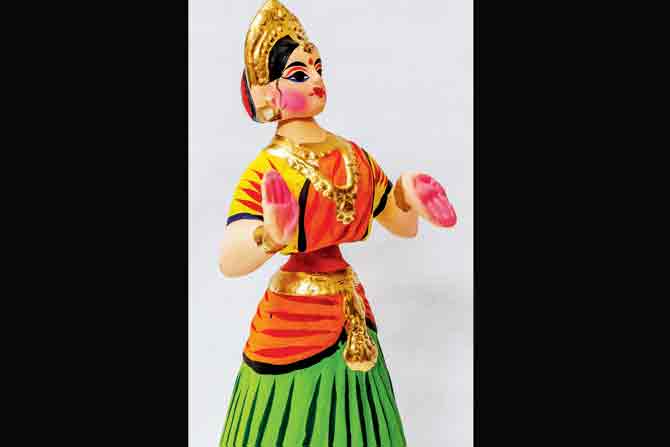
What is missing is "communication" between the government and the weaver organisations. And that's why Prasanna says the handloom board should exist. "This board [AIHB] is actually so important that the Prime Minister of the country should be its chairperson, because at the core of Ram Rajya lies hand-made production."
Despite the despondency, the Ministry of Textile's attempts to revive handloom have begun in full earnest. On August 7, Irani also launched the "My Handloom" portal, which she described as a "one-stop platform for information on everything related to handloom". "This portal will allow weavers' and other stakeholders to track applications in real-time, thereby enhancing transparency and increasing efficiency," she shared on social media. Two days later, she also shared photographs of the newly-renovated Weavers' Service Centre in Delhi, upgraded by NIFT.
Discussing the importance of the WSCs, which come under the DC (Handlooms), Jain shared, "They have developed a matchless calibre for the all-round development of handlooms. These are spread all over India and had once harnessed the services of India's finest contemporary artists as designers, and technologists in the fields of dyes, yarn, weaving as well as establishing close collaboration with local weavers. When these were energised by mega development projects such as the Master Weavers and Vishwakarma exhibition series, the WSCs produced such masterful examples of sarees and other textiles interpreting the best of regional traditions in contemporary aesthetic terms, that for decades after that the weavers continued to earn huge profits from these designs as well as by developing new designs based on that design aesthetic. We need to recognise their importance and re-energise them by engaging them with other such design development and production projects. Once defunct and shut down, it will not be possible to put such an infrastructure in place one again."
This writer reached out to Irani's office, via mail and call. She remained unavailable for comment.

Anuradha Kuli Pegu, National-award winning weaver, who found buyers due to the ministry’s social media mentions
When this writer reached out to Anuradha Kuli Pegu, a National-award winning weaver, who specialises in vegetable-dyed muga and eri silk sarees and stoles, and whose number was shared on the ministry's Twitter handle, she said she had received many enquiries from interested buyers and retailers over the last few weeks. Pegu belongs to the Miri tribe of Assam, and is affiliated with Paramparik Karigar, an association of craftsmen founded in 1996. Since 2006, she has been travelling across India, especially Mumbai, to display her creations at exhibitions. There was a lull due to the pandemic, but she says, she is grateful to the ministry for acknowledging her work. "I have been communicating with buyers on WhatsApp, and have already started delivering orders via courier," she says.
Shridhar of KhaDigi says the promotion of khadi and handloom on social media has helped with marketing. "Awareness is increasing, and that's good for the industry. But the ground reality is very different. The government still needs to intervene on many levels. Work is far from complete." Sundari adds, "There is a good collection of symbolic gestures that this government has offered the hand-made sector. They sound hollow in the absence of support exactly where it is needed."
Keep scrolling to read more news
Catch up on all the latest Mumbai news, crime news, current affairs, and a complete guide from food to things to do and events across Mumbai. Also download the new mid-day Android and iOS apps to get latest updates.
Mid-Day is now on Telegram. Click here to join our channel (@middayinfomedialtd) and stay updated with the latest news
 Subscribe today by clicking the link and stay updated with the latest news!" Click here!
Subscribe today by clicking the link and stay updated with the latest news!" Click here!










